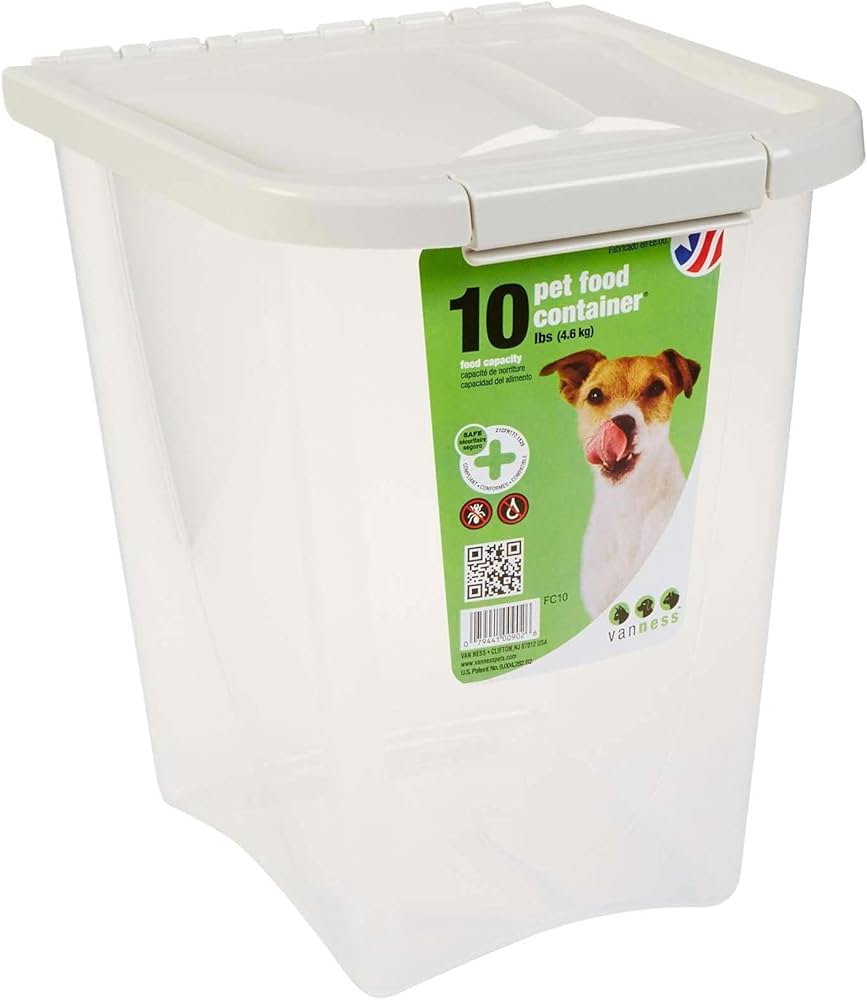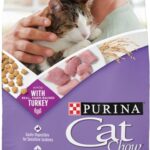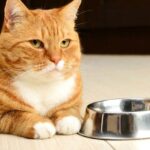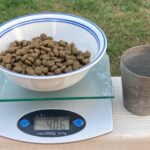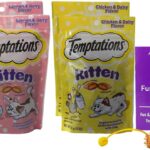A pet food storage container keeps your pet’s food fresh and pest-free. Selecting the right one ensures longevity and nutrition preservation.
Choosing the ideal pet food storage container is crucial for maintaining the quality and freshness of your pet’s food. High-quality containers protect the food from air, moisture, and pests, which can all lead to spoilage or contamination. With a variety of options available, from airtight seals to stackable designs, you can easily find a container that fits your space and keeps your pet’s food safe.
By investing in a durable and appropriately sized pet food storage container, you ensure that your furry friend’s meals remain as nutritious and delicious as the day you bought them. Proper storage also reduces waste, helping you save money and avoid unnecessary trips to the store.
Unlocking Pet Food Storage Secrets
Welcome to the essential guide to ‘Unlocking Pet Food Storage Secrets’. Every pet lover knows the joy of providing their furry friends with the best possible care. Part of that care involves how we handle and store their food. A great storage container isn’t merely a convenience—it’s a vital part of maintaining the quality, freshness, and safety of your pet’s diet. In this guide, we’ll dive into the best practices for preserving those crunchy kibbles and succulent wet foods to ensure your pet receives the nutritional benefits with every meal.
Importance Of Maintaining Freshness
Keeping pet food fresh isn’t just a preference; it’s imperative for your pet’s health. With the right storage solutions, you can prevent nutrient degradation and protect the food from harmful contaminants. A proper seal against humidity and pests keeps food crispy and flavorful, ensuring your pet always enjoys mealtime to the fullest.
- Airtight containers minimize the food’s exposure to air and moisture, which can lead to staleness and mold development.
- Food freshness translates to higher nutritional value, as the longer the food is exposed, the more vitamins and minerals dissipate.
- Storing in cool, dry places helps maintain the food’s integrity longer than leaving it in hot or humid areas.
The Interplay Between Food Quality And Shelf Life
The quality of pet food and its shelf life are inherently connected. From the production line to your pet’s bowl, maintaining quality means respecting the shelf life established by the manufacturer. This means adhering to best before dates and understanding how storage can extend or reduce the window in which the food is optimal for consumption.
Here are the main factors playing a role:
- Storage temperature: Extreme temperatures can accelerate food spoilage.
- Moisture levels: High humidity can induce mold growth and decrease food quality.
- Packaging: Original bags are designed to protect food, but once opened, transferring the contents to a container is crucial for continued preservation.
Recognizing Spoilage Signs
Recognizing when pet food has gone bad is key to preventing your beloved pet from consuming something harmful. Spoiled food is not only unappetizing but can also be dangerous, causing gastrointestinal upset or more severe health issues. Vigilance in food storage and routine inspections can safeguard your pet’s wellbeing.
| Sign | Description |
|---|---|
| Discoloration | Changes in the food’s color often indicate that oxidation or mold has compromised its quality. |
| Odor | A sour or rancid smell is a clear indicator that the food shouldn’t be consumed. |
| Texture | Kibble should be crisp; if it’s soggy or clumps together, that’s a sign of moisture contamination. |
| Bugs or pests | Visible insects or rodents signify the food is not stored properly and is unsafe for pet consumption. |
By implementing these storage strategies and staying alert to spoilage signs, pet owners can ensure their pets’ food remains in peak condition. An optimal storage solution will support your pet’s health by offering them the best of their meals—both in taste and nutritional content. Remember, a happy pet starts with a well-fed pet, and that journey begins and ends with how you handle their food.
Choosing The Right Pet Food Container
An essential aspect of pet care often overlooked is Choosing the Right Pet Food Container. Proper storage preserves the nutritional quality of the pet’s food and keeps it fresh and free from pests. With numerous options available, pet owners need to consider several factors to pick the most suitable container. This section delves into the key elements guiding this crucial decision for pet health and owner convenience.
Factors Affecting Container Selection
Selecting the ideal container for pet food isn’t just about aesthetics; it involves contemplating various considerations that impact the food’s longevity and safety. Understanding these can make the selection process much less daunting and more effective.
Material
The material of a pet food container plays a central role in its functionality and durability. Common materials include:
- Plastic: Lightweight and cost-effective, plastic containers are a popular choice but ensure they are BPA-free for safety.
- Metal: Sturdy and often more stylish, metal containers tend to be more durable but can be heavier and pricier.
- Glass: Glass is an excellent option for those looking for a non-porous and eco-friendly solution, though they can be breakable and heavy.
Size
Size matters when it comes to pet food containers. A container too small can lead to frequent refills while an excessively large one may encourage staleness. The perfect size should accommodate the food bag entirely and fit conveniently within the allocated space.
Seal Quality
A high-quality seal is crucial to prevent air, moisture, and pests from contaminating the pet food. Airtight seals preserve freshness and nutritional value, thus contributing significantly to the pet’s well-being.
Varieties Of Storage Containers Available
From stackable units to rolling bins and decorative canisters, the market offers a multiplicity of designs. Stackable containers save space efficiently, rolling bins provide mobility, and decorative options blend with home decor while still being functional.
Comparing Cost And Longevity Of Options
Cost versus longevity is a balancing act in selecting the right container. A cost-effective plastic bin might appeal to the budget-conscious, but a higher-end metal container may prove more economical over time due to its durability.
| Container Material | Typical Cost | Estimated Longevity |
|---|---|---|
| Plastic | $$ | 1-3 years |
| Metal | $$$ | 5+ years |
| Glass | $$$ | Indefinite (with care) |
In summary, the perfect selection combines appropriate size, material and seal quality to safeguard the pet’s nutrition. Diverse storage options cater to varying preferences and needs, and evaluating the trade-off between initial cost and long-term utility ensures a sound investment in your pet’s health.
Storing Kibble To Keep It Fresh
Every pet parent knows that feeding their furry friends high-quality food is essential for their health and happiness. However, what is equally important and often overlooked? Ensuring that kibble stays fresh from the first scoop to the last. The freshness of pet food can significantly diminish if not stored properly. With optimal storage conditions, not only can the taste be preserved but also the nutritional value, which is crucial for your pet’s wellbeing.
Optimal Conditions For Pet Food Storage
To maintain the integrity of your pet’s food, pay close attention to three key environmental factors: temperature, humidity, and light exposure. These factors have a direct impact on the quality and longevity of the kibble, influencing its taste, texture, and nutritional content.
Temperature
High temperatures can lead to the degradation of vitamins and can expedite the rancidity of fats in kibble. Keep pet food in a cool, dry place, ideally at room temperature, which typically means around 68°F (20°C). Minimize kibble’s exposure to warmer areas such as near ovens, stovetops, or direct sunlight.
Humidity
Moisture can be kibble’s worst enemy. It promotes mold growth and bacterial contamination, making it essential to store pet food in a low-humidity environment. The ideal relative humidity for pet food storage is below 15% to prevent unwanted moisture from seeping into the kibble.
Light Exposure
Direct exposure to light, especially sunlight, can lead to the deterioration of kibble through the process of photo-oxidation, which affects the fats and can alter the flavor of the food. Store pet food away from windows and in opaque or translucent containers to minimize light exposure.
Step-by-step Guide On Proper Kibble Storage
Keep It Sealed: Upon opening, if kibble comes in a resealable bag, make sure to seal it tightly after each use. If the original packaging is not resealable, transfer the kibble to a dedicated pet food container with an airtight seal.
Use the Right Container: Select an airtight container made of food-grade materials, preferably BPA-free. Containers should shield the food from light and be sturdy enough to prevent pests from accessing the food.
Maintain the Environment: Store the container in a cool, dry place away from heat sources and moisture to maintain an optimal environment.
Avoid Mixing Batches: If possible, do not mix new kibble with the old. Use up the current supply before refilling the container with a fresh batch to ensure the older food doesn’t sit for too long, potentially going stale or rancid.
Keep It Clean: Regularly clean the storage container between refills. Use warm, soapy water and ensure the container is completely dry before adding new kibble to prevent mold and bacteria growth.
Check Date and Rotate Stock: Keep an eye on the ‘best by’ dates on the pet food packaging and rotate stock accordingly, using older bags first.
Innovative Pet Food Storage Container Features
As pet owners become more attentive to their furry friends’ needs, the demand for pet food storage solutions that are not only practical but also packed with pioneering features is on the rise. These innovative pet food storage containers are designed to enhance convenience, preserve the quality of pet food, and seamlessly integrate into modern homes. Below, we dive into the exceptional features that set these containers apart, ensuring pet food stays fresh, is easily accessible, and that storage never compromises on style or functionality.
The Role Of Airtight Seals
Airtight seals are fundamental in pet food storage containers for various compelling reasons:
- Prevention of Oxidization: By keeping the air out, airtight seals protect pet food from oxidizing, which can degrade its nutritional value.
- Maintaining Freshness: The freshness of pet food is extended, preserving its texture and flavor, which pets love.
- Deterring Pests: An impenetrable seal keeps out pests, ensuring the food remains uncontaminated and safe for consumption.
A container with an effective airtight seal is not only about preserving quality but also about providing peace of mind that your pet’s health is safeguarded.
Benefits Of Stackable And Space-saving Designs
Space optimization is crucial, and stackable pet food containers offer a multitude of benefits:
- Maximized storage efficiency, especially in smaller living spaces.
- Reduced clutter through vertical storage solutions.
- Enhanced accessibility and convenience with multiple units.
Stackable designs are not only about saving space; they also contribute to an organized and aesthetically pleasing feeding area for your pet.
Containers With Built-in Food Dispensers
Containers featuring built-in food dispensers elevate the pet-feeding experience:
| Feature | Advantage |
|---|---|
| Controlled Portions | Facilitates managing dietary needs by dispensing precise amounts. |
| Convenient Refilling | Minimizes spills, easing the refilling process. |
| Easy Access | Provides quick and straightforward access to pet food. |
These dispensers enable practicality and efficiency, contributing to an effortless feeding routine for your pet.
Maintaining Your Pet Food Container
Every pet owner knows that a well-maintained pet food storage container is essential in keeping their furry friend’s food fresh, nutritious, and safe from external contaminants. Regular upkeep of your pet food container doesn’t just prolong the life of the food; it also prevents potential health risks that could arise from bacteria or infestations. Let’s dive into how you can ensure that your pet’s next meal is as wholesome as the bond you share with them.
Cleaning Routines To Prevent Contamination
Developing a cleaning routine for your pet food storage container is crucial for preventing any contamination that can occur from leftover crumbs and oil residues. Contaminants can lead to the growth of mold and bacteria, spoiling the food and possibly leading to illness in pets.
- Empty the container fully before cleaning.
- Use a safe, pet-friendly detergent or soap.
- Scrub all corners to remove residual oils and crumbs.
- Rinse thoroughly to prevent any detergents from mixing with the pet food.
- Dry the container completely to avoid any mold growth.
Frequency
The frequency of cleaning your pet food container largely depends on how fast you go through pet food. As a general rule:
- Weekly: Clean if you feed your pet wet food or raw diets due to quicker spoilage.
- Monthly: Sufficient for dry kibble containers, as long as they’re stored properly.
Methods And Materials
When considering the methods and materials for cleaning:
- Opt for a soft cloth or sponge that won’t scratch the container.
- Consider using vinegar as a natural disinfectant for a chemical-free clean.
- Incorporate baking soda to neutralize odors, leaving a clean scent.
Keeping Pests And Pets Out Of The Storage Container
Defending your pet food storage from curious paws and pests is another key aspect of maintenance:
- Airtight seals are your best defense. Ensure the lid seals tightly after every use.
- Consider metal containers if your pet likes to chew through plastic.
- Store the container off the ground and in a cool, dry place.
When To Replace Your Pet Food Storage Container
While good maintenance can extend the life of your pet food container, it’s important to recognize when it’s time to replace it:
- Visible cracks or damage can invite contamination and pests.
- Warped or ill-fitting lids compromise the seal and freshness.
- After a few years, consider an upgrade to benefit from improved design and materials.
By carefully following these practices, you’ll not only provide a healthier meal for your pet but also save money by avoiding waste and preserving the quality of pet food for longer.
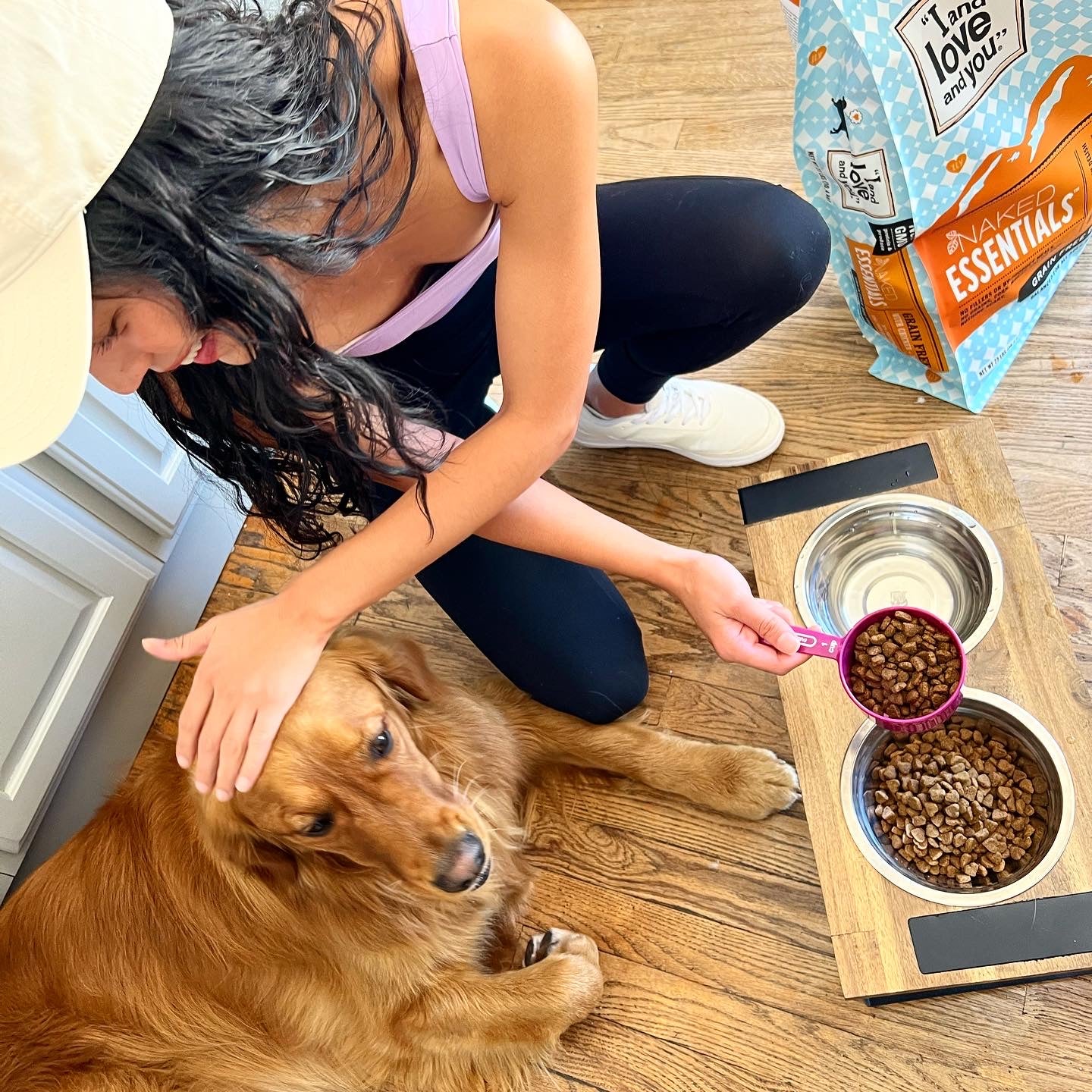
Credit: iandloveandyou.com
Pet Food Storage Container Essentials Unveiled
Freshness is paramount when it comes to pet food, especially dry kibble, which can easily lose its nutritional value and flavor if not stored properly. The right pet food storage container not only preserves the goodness of your furry friend’s meals but also ensures that their food remains safe from contaminants and pests. Uncover the essentials of ideal pet food storage with practical insights into maintaining kibble quality, comprehensive checklists for storage, and hands-on tips for ongoing freshness and container upkeep.
Recap On Keeping Kibble Fresh And Nutritious
Like any other food item, kibble demands specific storage conditions to keep it at peak freshness. A combination of a cool, dry place and an airtight container works wonders in preserving the essential nutrients and preventing the degradation of fats and oils in kibble, which can lead to rancidity. It’s critical to prevent exposure to air, moisture, and extreme temperatures, all of which can speed up the spoilage process and diminish the food’s palatability.
Checklist For Pet Food Storage
- Choose an airtight container: To lock out moisture and pests, which can spoil the food and pose health risks.
- Select the right size: The container should hold the entire bag of food to limit exposure to air.
- Opt for durable materials: BPA-free plastic or stainless steel are recommended materials for longevity and safety.
- Store in a cool, dry place: Avoid areas that are prone to temperature changes or moisture, like a garage or outdoor shed.
- Keep original packaging: Place the entire bag inside the container for added protection and to retain important information like the expiration date.
Tips On Monitoring Food Freshness And Container Maintenance
Regular monitoring is essential to ensure the continued freshness of pet food. Practices such as routinely checking sell-by dates, inspecting food for any unusual odors or signs of pests, and washing containers between refills can make a significant difference:
- Inspect before serving: Give the kibble a quick check to catch any mold, bugs, or other oddities before they reach your pet’s bowl.
- Regular cleaning: Schedule monthly container cleanings using warm, soapy water to remove food oils and potential contaminants.
- Dry thoroughly: Before refilling the container, ensure it is completely dry to avoid moisture, which can lead to mold.
- Keep track of freshness: Mark the purchase date and use the food within six weeks to ensure maximum freshness.
- Maintain the seal: Check the container seal regularly to confirm it remains airtight and effective.
Frequently Asked Questions Of Pet Food Storage Container
What Is The Best Pet Food Container?
A good pet food container is airtight, durable, and BPA-free like the Vittles Vault. It should keep food fresh, prevent pests, and preserve the food’s nutrients.
How To Keep Pet Food Fresh?
To keep pet food fresh, store it in a cool, dry place. Use an airtight container to prevent moisture and contaminants.
Can Plastic Containers Spoil Pet Food?
Yes, certain plastics can spoil pet food. Choose BPA-free, food-grade containers that are specifically designed for pet food storage.
Why Is Airtight Pet Food Storage Important?
Airtight storage prevents air, moisture, and pests from reaching the food. It helps maintain freshness, nutritional value, and taste of the pet food.
Conclusion
Storing your pet’s food properly guarantees freshness and health benefits. Ensure you choose the right container, mindful of material and size for your furry friend’s needs. Embracing proper storage techniques will not only keep your pet’s meals tasty but also contribute to their overall well-being.
